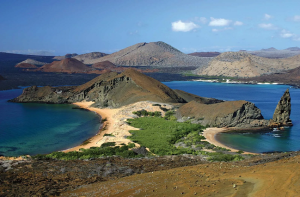Climate Fund Managers (CFM), a climate-centric investment firm, has announced the financial close of a new debt-for-climate conversion. The transaction, which CFM facilitated via its marine ecosystem venture, Oceans Finance Company (OFC), will protect one of the planet’s most important ecosystems: the Galapagos Islands. CFM is co-owned by Sanlam Infraworks, part of the Sanlam Group of South Africa and FMO, the Dutch development bank.

The Galapagos conversion, which is said to be the largest in history, exchanged $1.628 billion in Ecuadorian government bonds for a $656 million impact loan. The transaction will generate savings to the Ecuadorian fiscus of $1.126 billion through 2041. In return, Ecuador will direct savings of $323 million by 2041 to the conservation of the Galapagos and establish a new endowment fund maturing to $227 million to finance their preservation thereafter.
CFM, through OFC, was one of the key advisors in the transaction. It developed the concept to fruition, led on the financial structuring and invested $2 million in early-stage development capital via its Climate Investor Two (CI2) Fund, an innovative blended finance vehicle focused on oceans, water and sanitation. CI2, through a complimentary structure, is expected to avail an additional $5 million per annum for conservation.
Debt-for-climate conversions are an innovative finance mechanism that exchanges a portion of government debt at more favourable terms, with savings spent on climate-positive action.
Situated in a 200,000 km² Marine Protected Area (MPA) off the coast of Ecuador, the Galapagos are a biodiversity hotspot with the highest concentration of endemic species on the planet. Hampered by a lack of funding to enforce its protected status, overfishing combined with pollution and climate change has put the fragile ecosystem and the communities that depend on it at risk.
The conservation funds will protect the 60,000 km² Hermandad Marine Reserve (HMR), providing vital protection for marine life whilst also promoting sustainable fishing and tourism, enhancing ecosystem richness, and building resilience to climate change.
Extending to the Cocos Islands, the HMR also provides a safe corridor along a key migratory route for endangered marine species including the Scalloped Hammerhead shark, Oceanic Manta Ray, Blue Whale and several species of marine turtle that move between Ecuador, Colombia and Costa Rica.
The funding availed will help physically protect the HMR through traditional methods such as patrolling but also via technology including drone monitoring and satellite imagery. Targeted funding will support community development initiatives including programmes to support sustainable livelihoods, women’s economic empowerment, improved access to sanitation and waste management infrastructure (which will ultimately help to reduce the harmful impacts of pollution on the marine environment), and educational campaigns.
Andrew Johnstone, CEO of CFM, said: “Climate Fund Managers’ purpose is to end the climate crisis. We do this by raising and deploying blended finance funds at scale and at pace, working in partnership to deliver sustainable climate solutions. Debt-for-climate swaps are a cutting-edge climate solution that make significant, sustainable impact in a single transaction. The Galapagos conversion sets a new precedent which we are actively looking to replicate across our focus markets of Africa, Asia and Latin America.”
Erik Wandrag, CEO of OFC, said: “The Galapagos are one of the most valuable and vulnerable marine ecosystems on the planet and this conversion will conserve them for generations to come. Each debt-for-climate conversion takes us a crucial step closer to achieving the global goals of conserving and managing 30% of the world’s lands and waters by 2030 and limiting global warming to 1.5°C.”
The conversion supports the achievement of OFC’s impact objectives, namely to: conserve 800,000km², protect 20,000 species including 1,000 that are endangered, mobilise $50 million funding per conservation area including an endowment fund to continue funding post the arrangement period and improve the lives of 2.5 million people.
